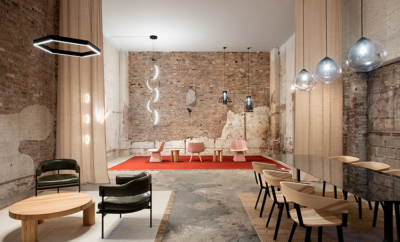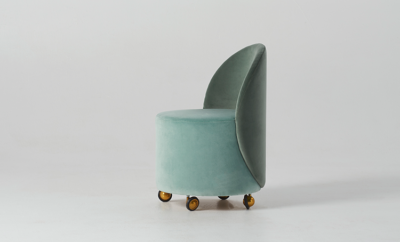
Exhibition
At Full Stretch
HERE’S A LITTLE-KNOWN BUT FUN FACT: Peter Shire’s Bel Air chair (1982), a postmodern icon first produced for the Memphis group, was originally covered in umbrella fabrics. That was the only material available at the time with the requisite flexibility and intense color range. It’s just one example in the long, strange history of modern upholstery, which remains relatively unknown even to design connoisseurs. Masters of the discipline receive little credit compared to their peers who developed tubular steel and plywood furniture, though their influence was arguably far more pervasive.
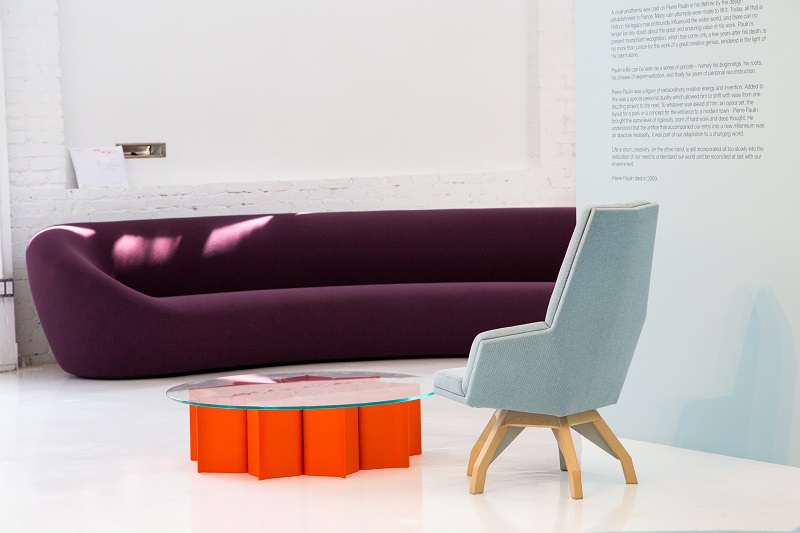
The Pierre Paulin installation at Ralph Pucci’s LA showroom.
Now, one figure in the pantheon is getting his due: Pierre Paulin (1927–2009). The subject of an installation at Ralph Pucci’s showroom in Los Angeles, Paulin was not only a technical innovator, but also a consummate form-giver. His sense of sculptural volume was unrivaled by any other figure of his era, with the sole exception of his near exact contemporary, the Danish pop designer Verner Panton (1926–1998). Both men exploited modern technology—not only in coverings, but also in foundation materials like foam rubber and polyester resin—to achieve dramatic rounded shapes unthinkable in traditional hand-sewn upholstery.
Unsurprisingly, Paulin drew his early inspiration from outside the furniture world. His uncle Georges was a celebrated automotive designer, who made spectacular streamlined creations for Peugeot. Pierre’s own creative breakthrough came, improbably enough, at a swimwear fashion show in Maastricht. Noticing the way that stretch jersey wrapped round the irregular shapes of the body, he had the idea of using a similar modern fabric over a tubular steel armature, padded with foam. It was a direct translation from the human body: bones, muscle, and skin.
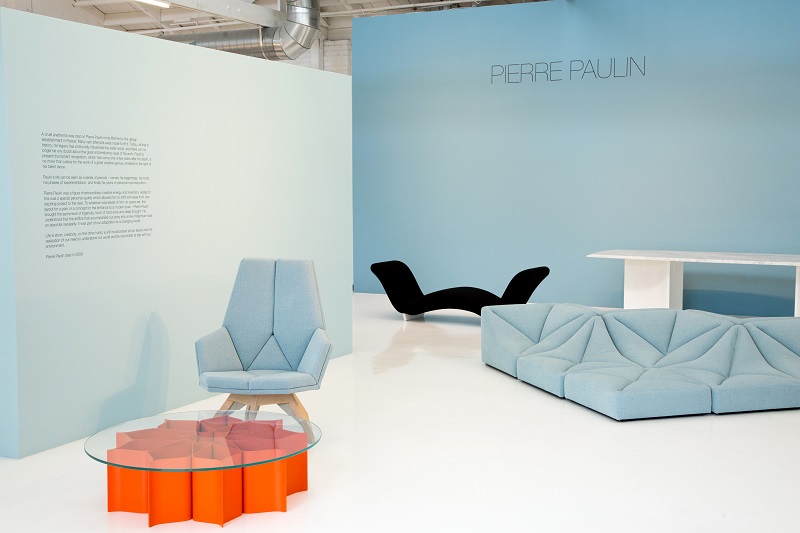
The Pierre Paulin installation at Ralph Pucci’s LA showroom. From left: Rosace table, 1968; Iéna armchair, designed for the Palais d’Iéna in Paris, 1983-1985; Banquette Face à Face, 1968; Table HY, c. 1960; Dune modular sofa, 1966-1970.
On the strength of his first designs, which were fabricated by hand in very limited numbers, Paulin was hired by the storied Viennese- born brand Thonet. (The firm’s name is virtually synonymous with bentwood, of course, but his work for them featured tubular metal legs.) He also produced work for the French company Meubles TV in the 1950s. But it was with the Dutch manufacturer Artifort that he made his most enduring classics: the Orange Slice and Tongue chairs (1960 and 1967, respectively), which look pretty much as their names suggest, and the drape-like Model 300 (1965– 1966), an example of which is in the collection of the Museum of Modern Art.
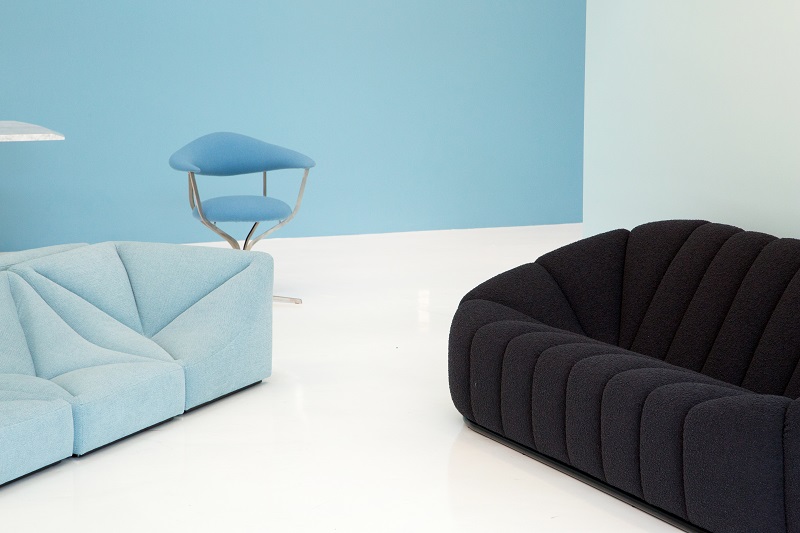
Dune modular sofa, 1966-1970; F050 chair, 1959; Alpha couch, 1972.
Pointing to that early recognition of his father’s work—earlier than that at any French institution—Paulin’s son Benjamin notes that America has had a long love affair with Pierre’s work, also exemplified by a classic Swinging Sixties collaboration with the great fabric designer Jack Lenor Larsen. In this sense, Pucci’s exhibition is just the latest chapter of a transatlantic story. But the show does look back to a quintessentially French moment, when the nation’s ultra-fashionable president, Georges Pompidou, decided to redecorate the private apartments and reception rooms of the Élysée Palace entirely au style moderne. While many Paulin classics remain in production today with Artifort, as well as Ligne Roset, the palace commission never went into extended production.
Now Benjamin has taken on the job of re-creating furniture from the presidential suite, as well as other “utopic” creations by his father that never saw extended manufacture. In this effort he has been immeasurably helped by Michel Chalard, who was his father’s prime technical assistant for more than forty years. Many of the artisanal workshops that collaborated with Paulin are still extant too. The depth of their craftsmanship is evident in the works at Pucci—exuberant conceptions executed with remarkable precision and grace. The Élysée Alpha chairs are like poufs all grown-up, with lobed forms plunging into a comfy central seating well. A table inspired by the Cathedral of Milan, designed by Paulin in 1981, manages to find a happy middle ground between two seemingly antithetical styles: pop and Gothic.

Alpha couch, 1972.
There is no doubt, though, that the pièce de résistance is Dune, mocked up by Paulin in 1970 but never fully realized in his lifetime. This extraordinary ensemble reimagines upholstered furniture as a modular indoor landscape, a rolling terrain of rounded polygonal forms. If a Donald Judd sculpture could take an acid trip, this is how it might feel. It is the perfect metaphor for Pierre Paulin’s work, which somehow managed to be wildly ambitious and completely relaxed at the same time. Vive le pouf. ralphpucci.net


